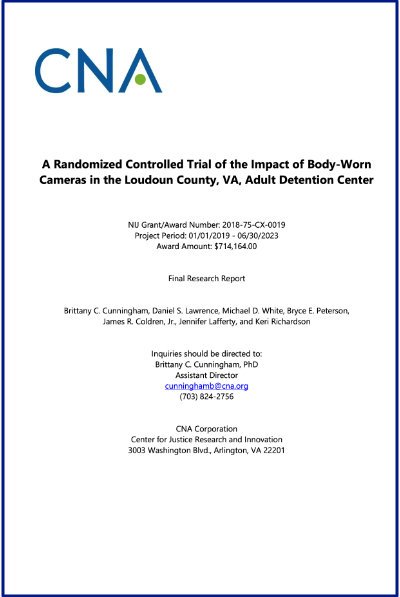By Brittany C. Cunningham; Daniel S. Lawrence; Michael D. White; Bryce E. Peterson; James R. Coldren, Jr.; Jennifer Lafferty; Keri Richardson
his final research report presents an evaluation of body-worn cameras (BWCs) in the Loudoun County, Virginia, Adult Detention Center. The goal of this study was to conduct a rigorous process and impact evaluation of BWCs in a correctional setting to inform researchers and practitioners about the implementation and potential impacts of BWCs on critical correctional outcomes. To achieve this goal, the study team implemented a 12-month, clustered, randomized controlled trial, and collected data using a mixed-method design. Primary data sources included the following: surveys of deputies; interviews of jail leaders, deputies, and external jail stakeholders; a focus group with deputies who serve on the Special Weapons and Tactics team; observations of jail operations and BWC trainings; review and analysis of jail administrative data, including response to resistance (RTR) events and resident injuries; and review and analysis of data collected from stationary cameras and BWC footage. Research findings suggested that BWCs have potential for improving the safety and security of correctional facilities by reducing RTR events and preventing injuries to incarcerated residents. However, findings from deputy surveys raised questions about the potential impact of BWCs on deputy-resident relations. The study also addressed one of the primary points of contention about implementing BWCs in correctional environments: that they are superfluous to the existing network of stationary cameras. This study found limitations with both types of cameras, as well as areas where they can complement one another to help overcome those limitations. The study team made several recommendations for policy and disseminated the research through both academic and practitioner conferences and publications.
Alexandria, VA: CNA Analysis & Solutions, 2023. 26p


